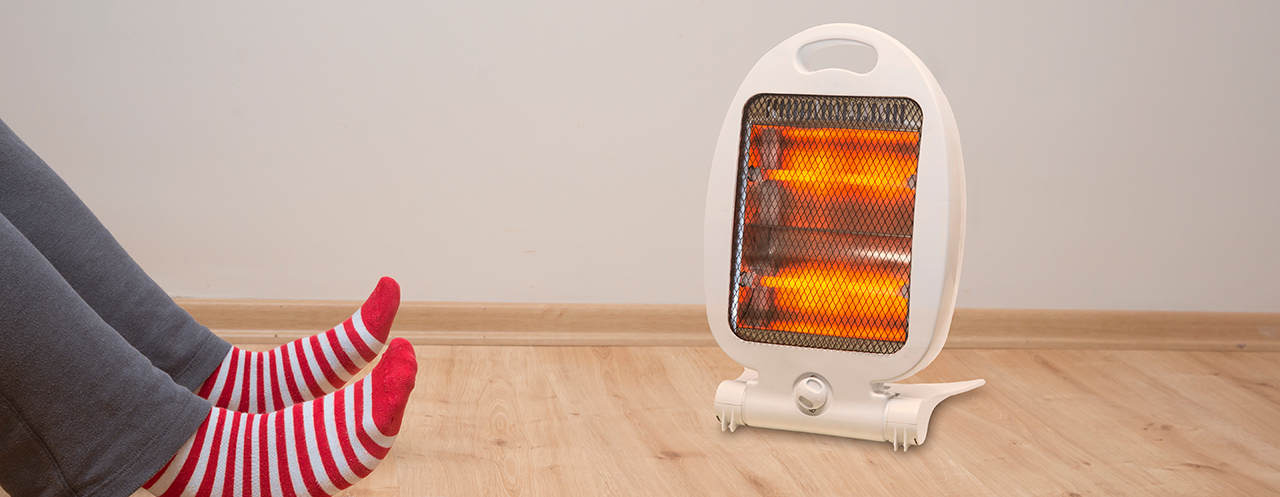
Electric heaters vs. reverse cycle air conditioner
Which is best for heating your Brisbane home?
Generally, winters in Brisbane are quite mild compared to other areas of the country. Yet there are times when it can
get pretty chilly outside. With the single digit temperatures getting so close, we need to start gearing up and nicely
warm our home and office. However, with so many options on the market, which one is the smartest, most energy efficient
and money saving on the long run? Electric heaters or reverse cycle air conditioners? Let’s see whether electric heating
or reverse cycle air conditioning is the best device for your home.
What are your home heating options?
An electric heater is a device that converts electric current to heat. The heating element inside every electric heater
is an electrical resistor, and works on the Joule heating principle: an electric current passing through a resistor will
convert that electrical energy into heat energy. Some examples include oil-filled column heaters and fan heaters, and
convection and panel heaters.
A reverse cycle air conditioner or a heat pump as it’s commonly known, uses an electric motor to drive a refrigeration
cycle, extracting heat energy from a source such as the ground or outside air and directs that heat into the space to be
warmed. It can be installed as a feature of a central air con, which means that when the heat pump is in heating mode,
the indoor evaporator coil switches roles and becomes the condenser coil, producing heat. The outdoor condenser unit
also switches roles to serve as the evaporator and discharges cold air (colder than the ambient outdoor air).
1 – Which device is more energy efficient and cheaper to run on the long term?
Well, this always tends to be the first question, doesn’t it? And fair enough! An electric heater has a 1 to 1
power to heat output, so for every 1 kW of heat you require 1 kW of electrical power. On the other hand, a reverse cycle
air con requires only 0.6 kW of electrical power for 2 kW of heat. This is because reverse-cycle air conditioners take
free heat from the air and use it to warm a room rather than burning electrical power, which makes it at least 3 times
more efficient (in terms of cost and energy) than an electric heater!
Reverse cycle air con scores!
2 – Which device warms up your home more rapidly and evenly?
This should have a clear, simple answer. If you want to get warm really fast, just place yourself in front of
the electric heater and you will start to feel like you’re burning instantly. In a similar way, when you turn it
off, the room temperature drops down in a blink of an eye. On the contrary, when using a reverse cycle air con, the warm
air is not only distributed evenly throughout the room but it also persists for a longer period of time.
Reverse cycle air con scores again!
3 – Which device is better for your health and friendlier with the environment?
We’ve explained earlier how reverse cycle air conditioners are 300% energy efficient while causing less carbon
dioxide to be produced in power plants burning fossil fuel than other kinds of electric heaters. Additionally, modern
systems generally have air-purifying filters which trap, absorb and deactivate microscopic particles, such as dust
allergens, virus bacteria and odours.
And again, reverse cycle air con scores!
Lastly, reverse cycle air con comes with a “2 in 1 device” feature, meaning that the same air con keeps itself busy to
cool you down during summer whereas the heater sits dormant in storage.
And that’s the game! Reverse cycle air con wins, 4.0.24 to electric heaters’ 0.0.0!
Talk to Jaric Electrical about heating your home this winter
To find out more, speak to the expert team at Jaric on 1300 452 742 or contact us online.
![JARIC [P] RED_RVSE Air and Electrics](https://jaricgroup.com.au/wp-content/uploads/2021/01/JARIC-P-RED_RVSE-Air-and-Electrics.png)




